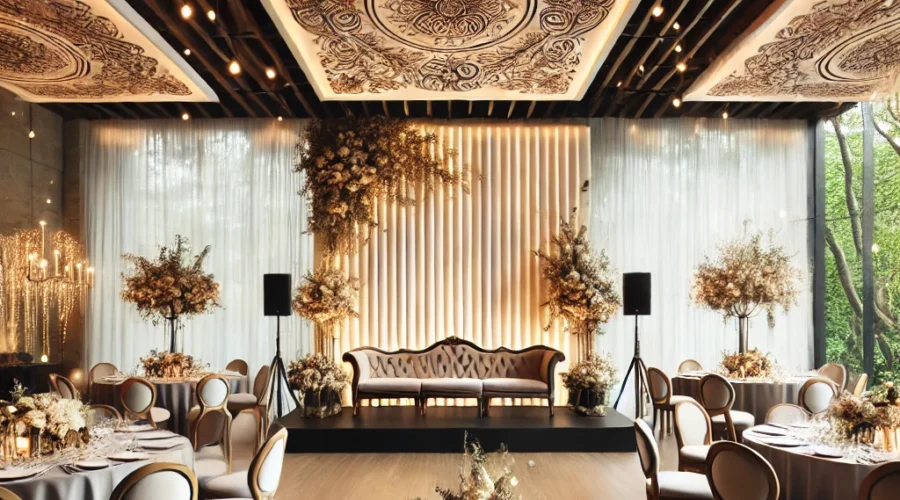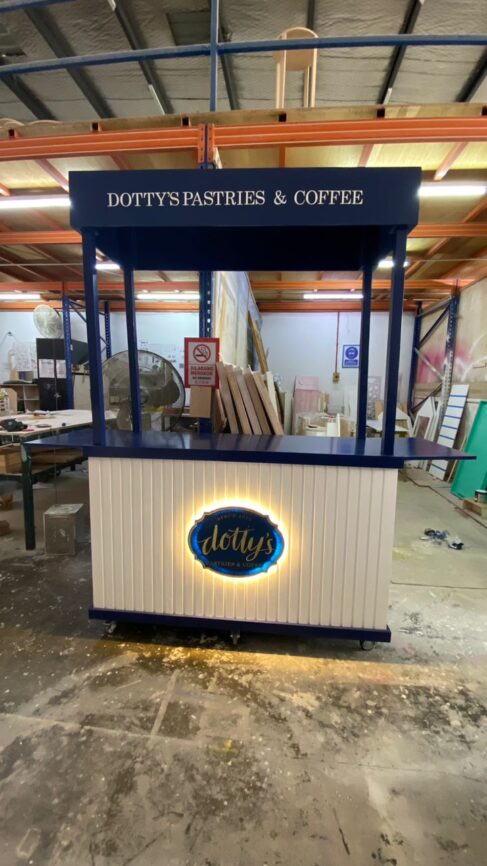Choosing the Perfect Backdrop Size for Your Event Space

The Ultimate Guide to Selecting the Perfect Backdrop Size for Your Event
1. Understanding the Importance of Backdrop Size
1.1. How backdrop size affects event aesthetics
The size of your backdrop can make or break the overall look of your event. A well-sized backdrop creates a focal point and sets the tone for the entire space. I remember attending a wedding where the backdrop was too small, and it looked lost on the stage. On the other hand, I’ve been to corporate events where the perfectly sized backdrop made the whole venue feel more professional and put-together.
1.2. Impact on photography and videography
Your backdrop size plays a crucial role in how your event photos and videos turn out. A backdrop that’s too small might cut off people’s heads in group shots, while one that’s too large could overpower the subjects. As someone who’s taken countless event photos, I can tell you that getting the backdrop size right makes a world of difference in capturing those perfect moments.
1.3. Relationship between backdrop size and event space
The size of your backdrop should be in harmony with your event space. A tiny backdrop in a massive ballroom will look out of place, just as a huge backdrop in a small conference room will feel overwhelming. It’s all about finding that sweet spot where your backdrop enhances the space without dominating it.
2. Measuring Your Event Space
2.1. Tools and techniques for accurate measurements
Getting accurate measurements is key to choosing the right backdrop size. I always carry a tape measure to event venues, but if you forget yours, most smartphones have measuring apps these days. Don’t be shy about asking the venue staff for help – they often have floor plans or can provide exact dimensions.
2.2. Accounting for ceiling height and width constraints
Remember to look up! I once made the mistake of not considering the ceiling height and ended up with a backdrop that was too tall for the space. Measure both the width and height of your available area, and don’t forget to account for any hanging light fixtures or other obstacles.
2.3. Considering audience viewing angles and distances
Think about where your guests will be standing or sitting. Will they be up close or far away? I’ve found that a backdrop that looks great from the back of the room might feel too imposing for those seated in the front row. Try to find a size that works well from all angles.
3. Types of Backdrops and Their Ideal Sizes
3.1. Step and repeat backdrops
Step and repeat backdrops are popular for red carpet events and photo ops. In my experience, an 8′ x 8′ backdrop works well for most situations, but you might want to go larger for bigger events or smaller for intimate gatherings.
3.2. Fabric and drape backdrops
Fabric backdrops offer versatility in size and shape. I love using them because they can be adjusted on-site. For a standard stage backdrop, I usually start with a 10′ x 20′ size and adjust from there based on the specific event needs.
3.3. LED and projection backdrops
LED and projection backdrops can be incredibly flexible in terms of size. I’ve seen amazing setups where the entire wall of a venue becomes a dynamic backdrop. The size here often depends more on your budget and the available technology than on physical constraints.
4. Matching Backdrop Size to Event Type
4.1. Corporate events and trade shows
For corporate events, I find that bigger is often better. A large backdrop can help reinforce branding and create a professional atmosphere. At trade shows, where space is at a premium, I’ve had success with backdrops around 8′ x 8′ for individual booths.
4.2. Weddings and social gatherings
Weddings and social events often benefit from more intimate backdrops. I usually recommend something in the 8′ x 10′ range for a photo booth, while a ceremony backdrop might be larger, perhaps 10′ x 12′, to frame the couple beautifully.
4.3. Photography studios and portrait sessions
In a studio setting, flexibility is key. I like to have a variety of backdrop sizes on hand, from small 5′ x 7′ backdrops for headshots to larger 10′ x 20′ options for full-body shots or group portraits.
5. Practical Considerations for Backdrop Sizing
5.1. Transportation and storage limitations
Always think about how you’ll get your backdrop to and from the venue. I learned this lesson the hard way when I bought a massive backdrop that barely fit in my car! Consider foldable or modular options if transportation is a concern.
5.2. Setup and breakdown time requirements
Larger backdrops generally take more time to set up and take down. If you’re on a tight schedule, you might want to opt for a slightly smaller, easier-to-manage size. I always try to allow extra time for setup, just in case.
5.3. Budget constraints and cost-effective solutions
Bigger isn’t always better when it comes to your wallet. I’ve found that sometimes using multiple smaller backdrops creatively can be more cost-effective than one large, custom-made backdrop. Don’t be afraid to think outside the box!
6. Customizing Backdrop Sizes for Unique Spaces
6.1. Working with non-standard venue shapes
Not every venue is a perfect rectangle. I once had to create a backdrop for a circular room, which was a fun challenge. In cases like these, consider custom-shaped backdrops or use multiple standard-sized backdrops to create a unique configuration.
6.2. Adapting to outdoor event requirements
Outdoor events bring their own set of challenges. Wind can be a major factor, so I often recommend slightly smaller backdrops for outdoor use, with extra support and tie-downs. Also, consider the natural backdrop – sometimes a smaller manmade backdrop that complements the scenery works better than trying to block it out entirely.
6.3. Creating modular and adjustable backdrop systems
I’m a big fan of modular backdrop systems. They allow you to adjust your backdrop size on the fly, which can be a lifesaver when you’re dealing with unexpected venue changes or last-minute client requests.
7. Technical Aspects of Backdrop Installation
7.1. Support structures and rigging options
The size of your backdrop will determine what kind of support it needs. Smaller backdrops might be fine with a simple stand, while larger ones could require truss systems or wall mounting. Always prioritize safety – I’ve seen poorly secured backdrops topple over, and it’s not pretty!
7.2. Proper tensioning for wrinkle-free appearance
Regardless of size, a backdrop needs to be properly tensioned to look its best. Larger backdrops often require more attention in this area. I always bring extra clamps and weights to ensure everything looks smooth and professional.
7.3. Lighting considerations for different backdrop sizes
Don’t forget about lighting! Larger backdrops may need more lights to ensure even coverage. I’ve found that adjustable LED lights work well for various backdrop sizes, allowing you to customize the spread and intensity as needed.
Summary
Choosing the right backdrop size is a balance of aesthetics, practicality, and technical considerations. By carefully measuring your space, considering your event type, and thinking through the logistics, you can select a backdrop size that enhances your event and creates the perfect atmosphere.
FAQs
1. What is the standard size for an event backdrop?
While there’s no one-size-fits-all answer, I often use 8′ x 8′ as a starting point for many events. However, the best size depends on your specific needs and venue.
2. How do I choose between a seamless or paneled backdrop?
This often comes down to personal preference and the look you’re going for. Seamless backdrops offer a clean, uninterrupted look, while paneled backdrops can be easier to transport and set up. I tend to use seamless for more formal events and paneled for trade shows or situations where I need more flexibility.
3. Can I use multiple small backdrops instead of one large one?
Absolutely! This can be a great solution, especially if you’re working with budget constraints or difficult spaces. I’ve created some really interesting designs using multiple smaller backdrops.
4. How much extra space should I allow around the backdrop?
I usually try to leave at least 2-3 feet on each side of the backdrop. This gives you room for people to stand comfortably and allows for better photo composition.
5. Are there any safety concerns with large backdrops?
Yes, safety should always be a top priority. Large backdrops need proper support to prevent tipping. Always follow manufacturer guidelines for installation, use appropriate weights or tie-downs, and be mindful of any fire safety regulations, especially with fabric backdrops.



